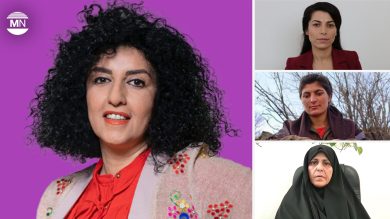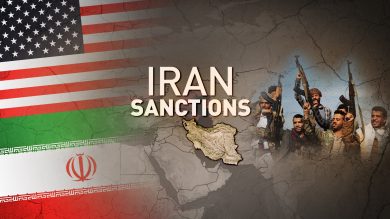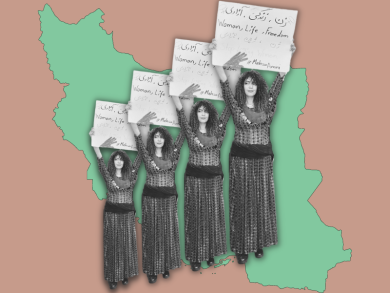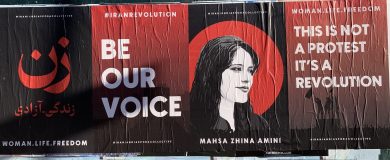The Islamic Revolutionary Guard Corps (IRGC) is one of the most powerful institutions in Iran. With billions in assets, foreign proxy armies, and vast control over the country’s politics, military, and economy, it often appears invincible. But despite its missiles, prisons, and propaganda, the IRGC has one deep, unrelenting fear: a free internet.
Not because the internet is Western. Not because it threatens “Islamic values,” as regime apologists claim. But because it threatens the very foundation of IRGC power: control over information, fear-based governance, and the ability to erase truth before it spreads.
In the digital age, the regime’s greatest threat is not a foreign invasion. It’s a tweet, a viral video, a whistleblower’s leak, or a livestream from a protest. And that’s why the IRGC treats internet access as a weapon of war — and a battlefield it must dominate.
1. The Internet Unmasks the Regime
The IRGC thrives on fear, disinformation, and silence. Its power lies in secrecy — secret arrests, secret courts, secret executions. But the internet shatters that secrecy.
Digital tools have:
• Exposed torture in Evin and Fashafuyeh prisons
• Shared videos of unarmed protesters shot in the streets
• Broadcast last messages of political prisoners before execution
• Revealed the IRGC’s involvement in mass surveillance and digital repression
What the regime once hid in the shadows is now broadcast around the world. In a few seconds, a young woman’s last breath becomes a global rallying cry. Mahsa Amini’s name became a symbol because someone uploaded the truth.
2. The IRGC’s Cyber Army: Silencing Dissent, Spreading Fear
To counter digital dissent, the IRGC created its own cyber division. Under the IRGC’s Intelligence Organization (SAS), thousands of personnel operate online to suppress, surveil, and attack.
Their tactics include:
• Hacking activists, journalists, and diaspora figures
• Phishing campaigns to steal passwords or access private chats
• Fake social media accounts to spread disinformation or incite division
• Surveillance through Iranian apps, like Soroush and Baleh
• Tracking VPN users and arresting them on vague “national security” charges
The IRGC doesn’t just fear what’s posted — it fears who’s posting. The regime is terrified that truth will be traced to a face, a location, a movement — and that it will spread faster than they can control it.
3. Internet Shutdowns: A Favorite Tool of Oppression
When the people rise, the regime pulls the plug.
Iran has:
• Cut nationwide internet during protests (notably in Nov 2019 and Sept 2022)
• Limited mobile data in cities facing unrest
• Throttled VPN and proxy services
• Blocked or slowed encrypted apps like Signal and WhatsApp
These shutdowns are not technical accidents. They are deliberate acts of political violence. Cutting internet during crackdowns prevents citizens from organizing, sharing evidence of abuse, or even calling for help.
During the November 2019 protests, 1,500 people were reportedly killed — most of them in silence, cut off from the world.
That is what a free internet could have prevented.
4. The Diaspora Connection: Breaking the Wall of Silence
One of the regime’s deepest fears is its inability to control information flowing abroad.
Exiled Iranians and diaspora activists have become a lifeline — using VPNs, encrypted apps, and satellite feeds to:
• Receive real-time updates from inside Iran
• Amplify voices of political prisoners and grieving families
• Translate and distribute protest content
• Organize international campaigns, petitions, and media coverage
Platforms like Twitter, Telegram, Instagram, and Clubhouse have become digital bridges between exiles and the homeland. The IRGC knows this. That’s why it targets diaspora journalists, surveils expat communities, and hacks family members to spread fear.
5. The Internet Builds Solidarity Across Borders
In a country divided by ethnicity, religion, and class, the internet has become a rare space of solidarity.
Examples:
• Kurdish, Baluch, Arab, and Persian users amplifying each other’s protests
• Sunni and Shia Iranians joining in hashtags like #WomanLifeFreedom
• LGBTQ+ voices breaking silence and building networks of support
• Women from small towns posting unveiled photos in solidarity with jailed protestors
The IRGC’s nightmare is not just unity — it’s digital unity, which spreads at light speed and connects where repression once isolated.
6. Youth Are Winning the Cyber War
Over 70% of Iran’s population is under 35. And they’re digitally native.
Despite censorship, young Iranians:
• Find new VPNs every week
• Create coded language to evade surveillance
• Use burner accounts and multiple SIM cards
• Study hacking and digital security
• Launch campaigns that go viral worldwide
They’re not just users of the internet — they’re warriors in an information war. And they’re outsmarting a regime that still thinks fear and firewalls can kill a revolution.
7. The IRGC’s Hypocrisy: They Use the Internet, Too
While the IRGC censors the internet for the public, it uses it freely for its own gain.
IRGC and regime figures:
• Own and use Twitter accounts (which is banned for Iranian citizens)
• Spread propaganda on Telegram, YouTube, and Instagram
• Operate websites and media in English, Arabic, and Spanish to influence global opinion
• Promote cyber warfare and fake news operations
This double standard proves their true fear isn’t the internet — it’s a free and fair internet. One that can’t be used only for control.
8. Women, Technology, and the IRGC’s Panic
Nothing scares the IRGC more than a woman with a smartphone.
From the viral image of a young woman standing on a utility box with her hijab on a stick, to leaked videos of forced confessions — women have used technology to defy the regime’s control over their bodies and voices.
Digital defiance includes:
• Posting unveiled photos as protest
• Recording sexual harassment by morality police
• Sharing messages from inside prisons
• Building encrypted support groups for survivors of assault or persecution
This is a gendered cyber revolution — and the IRGC knows it.
9. What Can Be Done? How the World Can Help
A free internet in Iran is possible — but it needs international commitment.
Policy recommendations:
• Fund anti-censorship technology like VPNs, proxy networks, and satellite-based internet
• Protect tech companies that resist censorship demands from Iran
• Support digital security training for Iranian activists and journalists
• Punish companies that assist the IRGC in censorship or surveillance (e.g., telecom partners)
• Support whistleblowers and leak platforms that expose IRGC digital crimes
Access to the internet should be treated like access to water — a human right, not a privilege.
Conclusion: Freedom Is a Signal They Can’t Jam Forever
The IRGC’s fear of the internet is not paranoia. It is the realization that truth spreads faster than fear — and that every connection is a spark in the dark.
You can shut down the web for a day. You can imprison a coder. You can block a platform. But you can’t unlearn what people now know:
• That freedom exists
• That solidarity is real
• That silence can be broken with a signal
The regime that fears memes, hashtags, and livestreams is a regime already losing its grip.
The internet is not the enemy. It is the battleground. And the people are winning.
Join Our Newsletter!
Stay informed with the latest updates, news, and ways to take action in the fight for justice and global security. Sign up now to get updates delivered straight to your inbox!





